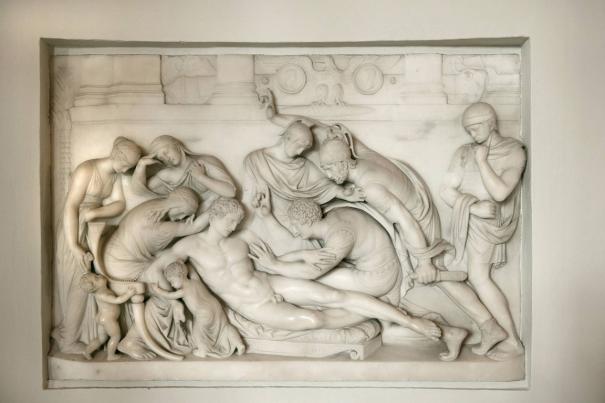Death of Germanicus
Documentation:
Nancy Pressley discusses Banks's sources of inspiration:
Nancy L. Pressley, The Fuseli Circle in Rome. Early Romantic Art of the 1770s (New Haven: Yale Center for British Art, 1979), 49.
"The sculpture was commissioned in marble by Thomas Coke, later Earl of Leicester, who installed it at Holkham Hall; there it was later joined by [Richard] Westmacott's Trial of Socrates and [Francis] Chantrey's Signing of the Magna Carta in a group that has been identified by modern scholars as a scheme in support of parliamentary reform. A Fox-ite Whig, Coke was one of the most fervent supporters of the Reform Bil and planned to commission Chantry to sculpt a statue of Napoleon for Holkham."
Other artists representing this subject:
Nicolas Poussin, Death of Germanicus, 1628 (Minneapolis Institute of Arts)
Heinrich Füger, Death of Germanicus, 1789 (Belvedere Museum, Vienna)
About the Artist
Died: London, 2 October 1810
Nationality: English


 Buy the Book
Buy the Book